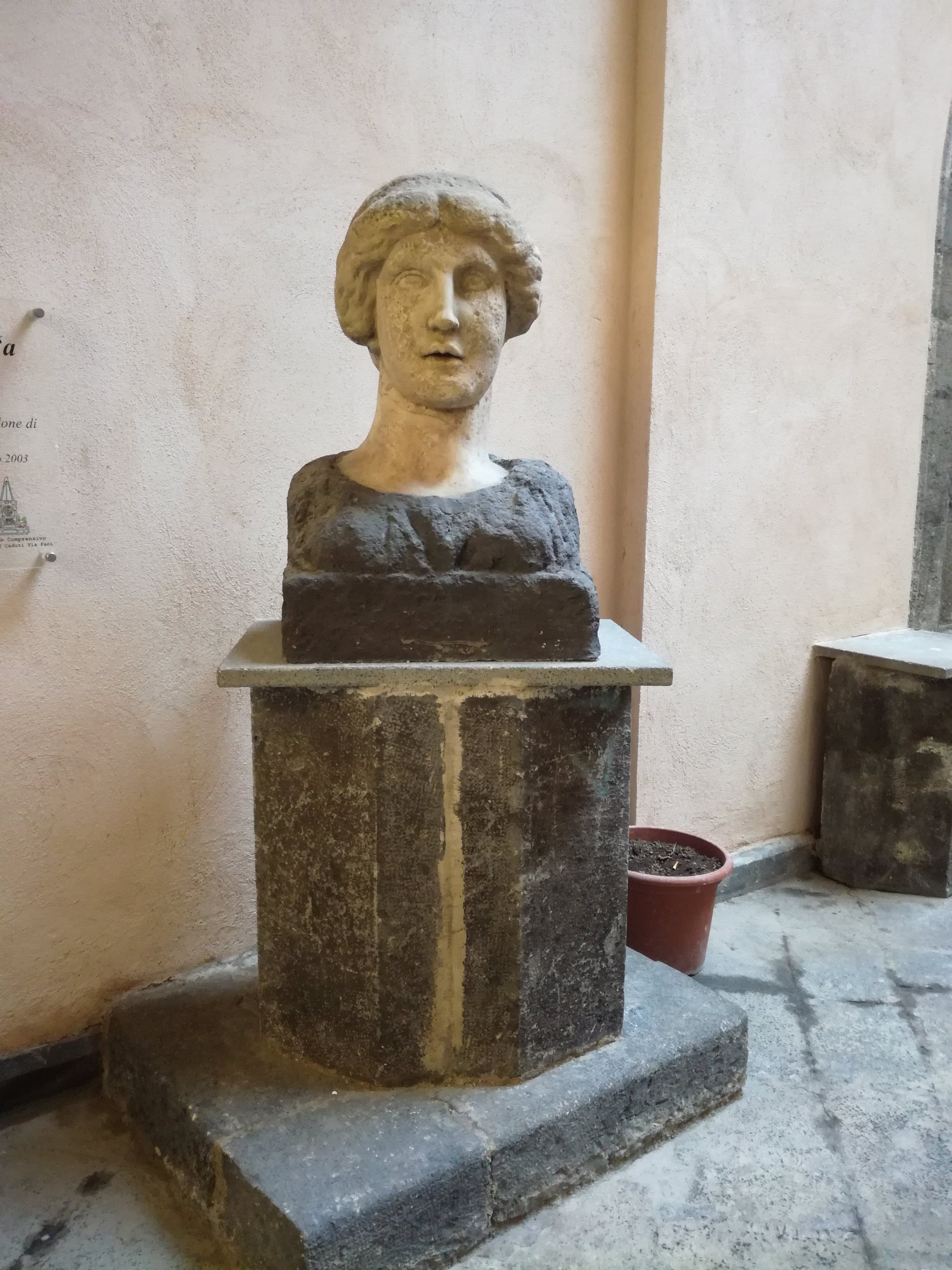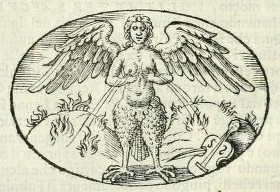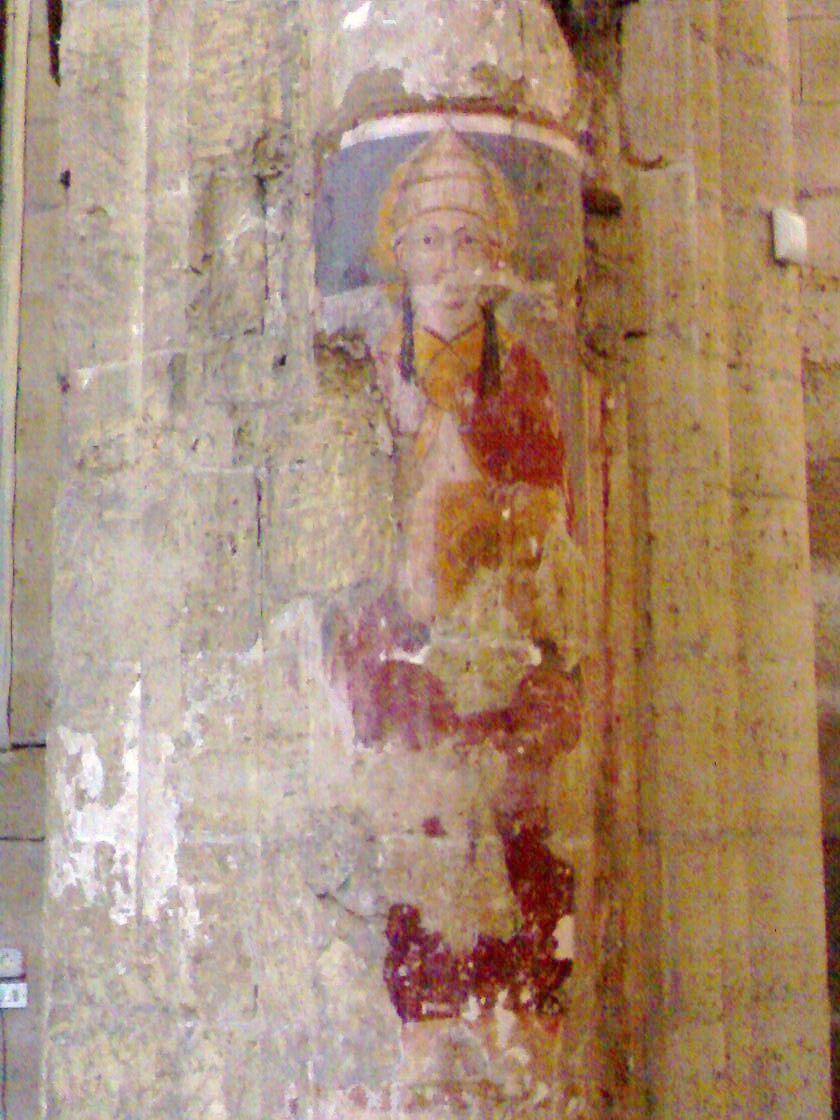|
San Giovanni A Mare, Naples
San Giovanni a Mare ( ''St. John at Sea'') is a church in Naples, Italy; located near the docks, not far from the church of Sant'Eligio Maggiore. The Romanesque architecture, Romanesque church was erected by Benedictine monks before the 12th century. By the 13th century, the church was attached to a hostel of the knightly order of ''Gerosolimitani'' ("Knights Hospitaller"). For some time, the church too belonged to the knights. The hostel was closed by Napoleonic forces, but was returned to the Church in 1828. The church building has been recently restored. Interior columns are spolia. Arabic and Byzantine influences can be seen in some of the apse columns. Other arches in the dome recall architecture of Amalfi. Donna Marianna: the ''Head of Naples'' In the atrium is a copy of an ancient Greek bust; the original is currently in the Palazzo San Giacomo, Naples, Palazzo San Giacomo. Now referred to as ''Donna Marianna'' or the ''Head ("Testa") of Naples'', it was once found in the ... [...More Info...] [...Related Items...] OR: [Wikipedia] [Google] [Baidu] |
Naples
Naples (; it, Napoli ; nap, Napule ), from grc, Νεάπολις, Neápolis, lit=new city. is the regional capital of Campania and the third-largest city of Italy, after Rome and Milan, with a population of 909,048 within the city's administrative limits as of 2022. Its province-level municipality is the third-most populous metropolitan city in Italy with a population of 3,115,320 residents, and its metropolitan area stretches beyond the boundaries of the city wall for approximately 20 miles. Founded by Greeks in the first millennium BC, Naples is one of the oldest continuously inhabited urban areas in the world. In the eighth century BC, a colony known as Parthenope ( grc, Παρθενόπη) was established on the Pizzofalcone hill. In the sixth century BC, it was refounded as Neápolis. The city was an important part of Magna Graecia, played a major role in the merging of Greek and Roman society, and was a significant cultural centre under the Romans. Naples served a ... [...More Info...] [...Related Items...] OR: [Wikipedia] [Google] [Baidu] |
Siren (mythology)
In Greek mythology, the sirens (Ancient Greek: singular: ; plural: ) were humanlike beings with alluring voices; they appear in a scene in the Odyssey in which Odysseus saves his crew's lives. Roman poets placed them on some small islands called Sirenum scopuli. In some later, rationalized traditions, the literal geography of the "flowery" island of Anthemoessa, or Anthemusa, is fixed: sometimes on Cape Pelorum and at others in the islands known as the Sirenuse, near Paestum, or in Capreae. All such locations were surrounded by cliffs and rocks. Sirens continued to be used as a symbol for the dangerous temptation embodied by women regularly throughout Christian art of the medieval era. Nomenclature The etymology of the name is contested. Robert S. P. Beekes has suggested a Pre-Greek origin. Others connect the name to σειρά (''seirá'', "rope, cord") and εἴρω (''eírō'', "to tie, join, fasten"), resulting in the meaning "binder, entangler", i.e. one who binds ... [...More Info...] [...Related Items...] OR: [Wikipedia] [Google] [Baidu] |
Napoli
Naples (; it, Napoli ; nap, Napule ), from grc, Νεάπολις, Neápolis, lit=new city. is the regional capital of Campania and the third-largest city of Italy, after Rome and Milan, with a population of 909,048 within the city's administrative limits as of 2022. Its province-level municipality is the third-most populous metropolitan city in Italy with a population of 3,115,320 residents, and its metropolitan area stretches beyond the boundaries of the city wall for approximately 20 miles. Founded by Greeks in the first millennium BC, Naples is one of the oldest continuously inhabited urban areas in the world. In the eighth century BC, a colony known as Parthenope ( grc, Παρθενόπη) was established on the Pizzofalcone hill. In the sixth century BC, it was refounded as Neápolis. The city was an important part of Magna Graecia, played a major role in the merging of Greek and Roman society, and was a significant cultural centre under the Romans. Naples served a ... [...More Info...] [...Related Items...] OR: [Wikipedia] [Google] [Baidu] |
French Revolution
The French Revolution ( ) was a period of radical political and societal change in France that began with the Estates General of 1789 and ended with the formation of the French Consulate in November 1799. Many of its ideas are considered fundamental principles of liberal democracy, while phrases like ''liberté, égalité, fraternité'' reappeared in other revolts, such as the 1917 Russian Revolution, and inspired campaigns for the abolition of slavery and universal suffrage. The values and institutions it created dominate French politics to this day. Its causes are generally agreed to be a combination of social, political and economic factors, which the ''Ancien Régime'' proved unable to manage. In May 1789, widespread social distress led to the convocation of the Estates General, which was converted into a National Assembly in June. Continuing unrest culminated in the Storming of the Bastille on 14 July, which led to a series of radical measures by the Assembly, i ... [...More Info...] [...Related Items...] OR: [Wikipedia] [Google] [Baidu] |
Marianne
Marianne () has been the national personification of the French Republic since the French Revolution, as a personification of liberty, equality, fraternity and reason, as well as a portrayal of the Goddess of Liberty. Marianne is displayed in many places in France and holds a place of honour in town halls and law courts. She is depicted in the ''Triumph of the Republic'', a bronze sculpture overlooking the Place de la Nation in Paris, as well as represented with another Parisian statue on the Place de la République. Her profile stands out on the official government logo of the country, appears on French euro coins and on French postage stamps. She was also featured on the former franc currency and is officially used on most government documents. Marianne is a significant republican symbol; her French monarchist equivalent is often Joan of Arc. As a national icon Marianne represents opposition to monarchy and the championship of freedom and democracy against all forms of ... [...More Info...] [...Related Items...] OR: [Wikipedia] [Google] [Baidu] |
Bay Of Naples
A bay is a recessed, coastal body of water that directly connects to a larger main body of water, such as an ocean, a lake, or another bay. A large bay is usually called a gulf, sea, sound, or bight. A cove is a small, circular bay with a narrow entrance. A fjord is an elongated bay formed by glacial action. A bay can be the estuary of a river, such as the Chesapeake Bay, an estuary of the Susquehanna River. Bays may also be nested within each other; for example, James Bay is an arm of Hudson Bay in northeastern Canada. Some large bays, such as the Bay of Bengal and Hudson Bay, have varied marine geology. The land surrounding a bay often reduces the strength of winds and blocks waves. Bays may have as wide a variety of shoreline characteristics as other shorelines. In some cases, bays have beaches, which "are usually characterized by a steep upper foreshore with a broad, flat fronting terrace".Maurice Schwartz, ''Encyclopedia of Coastal Science'' (2006), p. 129. Bays were s ... [...More Info...] [...Related Items...] OR: [Wikipedia] [Google] [Baidu] |
Odysseus
Odysseus ( ; grc-gre, Ὀδυσσεύς, Ὀδυσεύς, OdysseúsOdyseús, ), also known by the Latin variant Ulysses ( , ; lat, UlyssesUlixes), is a legendary Greek king of Ithaca and the hero of Homer's epic poem the ''Odyssey''. Odysseus also plays a key role in Homer's ''Iliad'' and other works in that same epic cycle. Son of Laërtes and Anticlea, husband of Penelope, and father of Telemachus and Acusilaus, Odysseus is renowned for his intellectual brilliance, guile, and versatility (''polytropos''), and is thus known by the epithet Odysseus the Cunning ( grc-gre, μῆτις, mêtis, cunning intelligence). He is most famous for his ''nostos'', or "homecoming", which took him ten eventful years after the decade-long Trojan War. Name, etymology, and epithets The form ''Odys(s)eus'' is used starting in the epic period and through the classical period, but various other forms are also found. In vase inscriptions, we find the variants ''Oliseus'' (), ''Olyseus'' (), ... [...More Info...] [...Related Items...] OR: [Wikipedia] [Google] [Baidu] |
Parthenope (Siren)
Parthenope ( grc, Παρθενόπη) was one of the Sirens in Greek mythology. Eustathius, l.c. cit.; Strabo, ''Geographica'' 5.246, 252Tzetzes, ''Chiliades'' 1.14, line 337 & 6.40 Her name means "maiden-voiced" from ''parthenos'' and ''ops''. Family Parthenope was the daughter of the god Achelous and the Muse Terpsichore. Her two sisters were called Ligeia, and Leucosia. Mythology According to Greek legend, Parthenope cast herself into the sea and drowned when her songs failed to entice Odysseus. Her body washed ashore at Naples, on the island of Megaride, where the Castel dell'Ovo is now located. Her tomb on the island was called "constraction of sirens". When people from the city of Cumae settled there, they named their city Parthenope in her honour. A Roman myth tells a different version of the tale, in which a centaur named Vesuvius was enamored with Parthenope. Angered, Jupiter turned the centaur into a stratovolcano and Parthenope into the city of Naples. Thwart ... [...More Info...] [...Related Items...] OR: [Wikipedia] [Google] [Baidu] |
Palazzo San Giacomo, Naples
The Palazzo San Giacomo, known as the Municipio (city hall) is a Neoclassical style palace in central Naples, Italy. It stands before the fortress of the Maschio Angioino, stradling the zones of Porto and San Ferdinando. It houses the mayor and the offices of the municipality of Naples. The entire office complex spans from largo de Castello to Via Toledo, along via di San Giacomo. In 1816, King Ferdinand I of the Two Sicilies commissioned the construction of a centralized building to house the various ministries of the government. The area for this palace was chosen, and the buildings therein were either demolished or incorporated including the monastery and church of the Concezione (once known as Santa Maria Fior delle Vergini), the Hospital of San Giacomo, and the offices of the Bank of San Giacomo. The church of San Giacomo degli Spagnoli was incorporated into the palace. The architects were Vincenzo Buonocore, Antonio De Simone, and Stefano Gasse. Work was only completed ... [...More Info...] [...Related Items...] OR: [Wikipedia] [Google] [Baidu] |
Sant'Eligio Maggiore
Sant’Eligio Maggiore is a church in Naples, southern Italy. It is located near Piazza Mercato (Market Square), and was built during the reign of Charles of Anjou by the same congregation that built the nearby Sant’Eligio hospital in 1270. It is the first church built in Naples by the Angevin Angevin or House of Anjou may refer to: *County of Anjou or Duchy of Anjou, a historical county, and later Duchy, in France **Angevin (language), the traditional langue d'oïl spoken in Anjou **Counts and Dukes of Anjou * House of Ingelger, a Frank ... dynasty and therefore the first one in Gotico Angioiano style. The arched passageway that opens onto Piazza Mercato is through the original façade of the church and has since been incorporated into the structure of the ancient hospital. Many of the lines of the original structure came to light in the course of restoration after the bombardments of the World War II. [...More Info...] [...Related Items...] OR: [Wikipedia] [Google] [Baidu] |
Amalfi
Amalfi (, , ) is a town and ''comune'' in the province of Salerno, in the region of Campania, Italy, on the Gulf of Salerno. It lies at the mouth of a deep ravine, at the foot of Monte Cerreto (1,315 metres, 4,314 feet), surrounded by dramatic cliffs and coastal scenery. The town of Amalfi was the capital of the maritime republic known as the Duchy of Amalfi, an important trading power in the Mediterranean between 839 and around 1200. In the 1920s and 1930s, Amalfi was a popular holiday destination for the British upper class and aristocracy Aristocracy (, ) is a form of government that places strength in the hands of a small, privileged ruling class, the aristocracy (class), aristocrats. The term derives from the el, αριστοκρατία (), meaning 'rule of the best'. At t .... Amalfi is the main town of the coast on which it is located, named '' Costiera Amalfitana'' (Amalfi Coast), and is today an important tourist destination together with other towns on the sa ... [...More Info...] [...Related Items...] OR: [Wikipedia] [Google] [Baidu] |








